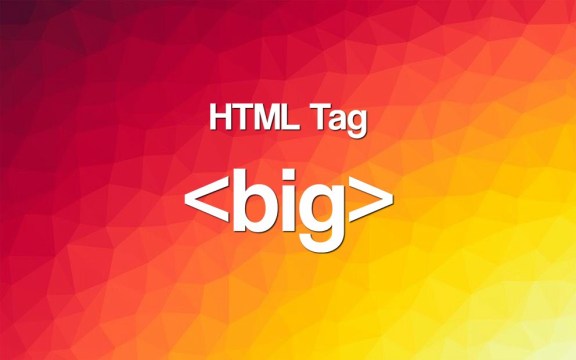The <big> HTML tag is used to increase the size of the text it surrounds. However, it's considered deprecated in HTML5, and its usage is discouraged. Instead, you should use CSS for styling purposes.
<big>text</big>
If you want to increase the size of text, you can use CSS properties like font-size. Here's an example of how you can achieve the same effect using CSS:
<!DOCTYPE html>
<html>
<head>
<style>
.big-text {
font-size: larger; /* You can adjust the size as needed */
}
</style>
</head>
<body>
<p class="big-text">This text is bigger!</p>
</body>
</html>
This way, you separate the structure (HTML) from the presentation (CSS), which is a better practice for web development.
Syntax and Attributes
The <big> HTML tag, although deprecated, still has a basic syntax:
<big>Text to be enlarged</big>
The <big> tag does not accept any attributes.
However, it's important to note that using the <big> tag for styling purposes is not recommended in modern web development. It's better to use CSS for styling instead.
Accessibility Considerations
When considering accessibility, the <big> HTML tag has several drawbacks:
-
Semantic Meaning: The
<big>tag doesn't provide any semantic meaning to assistive technologies. It simply increases the font size without conveying any additional information about the content. -
Deprecated: The
<big>tag is deprecated in HTML5, meaning it's not considered a best practice for modern web development. Deprecated tags may not be well-supported in all browsers and could be phased out in the future. -
Inconsistent Rendering: The rendering of the
<big>tag can vary across browsers and devices, leading to inconsistent user experiences. -
Limited Control: With the
<big>tag, you have limited control over the styling and presentation of the enlarged text. Using CSS allows for more precise control and better accessibility features.
Instead of using the <big> tag, it's better to use CSS for styling purposes. You can use CSS properties like font-size to increase text size while ensuring accessibility. Additionally, consider providing alternative ways for users to adjust text size, such as through browser settings or dedicated accessibility features on your website. This ensures that users with different needs and preferences can still access your content comfortably.
→ Utilizing the <abbr> HTML Tag (syntax, attributes, compatibility)
Compatibility and Browser Support
The <big> HTML tag has been deprecated in HTML5, meaning it's no longer recommended for use in modern web development. However, it may still be supported by most web browsers for backward compatibility with older HTML specifications.
Compatibility and browser support for the <big> tag can vary depending on the browser and its version. Most modern browsers should still render the <big> tag correctly, but its usage is discouraged in favor of using CSS for styling purposes.
It's essential to consider the long-term compatibility of using deprecated tags like <big>, as browser support may change over time. Additionally, using CSS for styling provides more flexibility and control over how text is displayed, ensuring a consistent experience across different browsers and devices.
